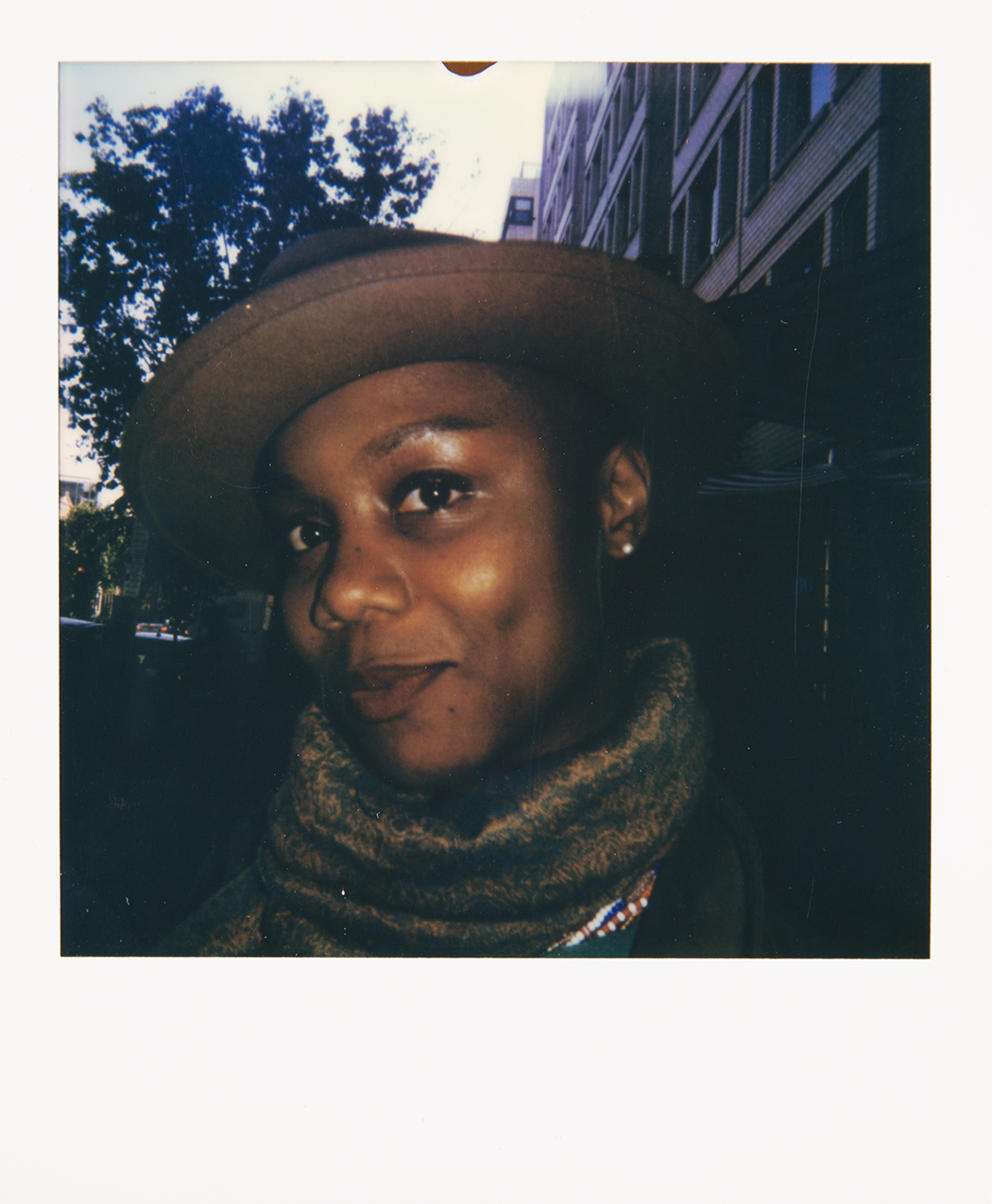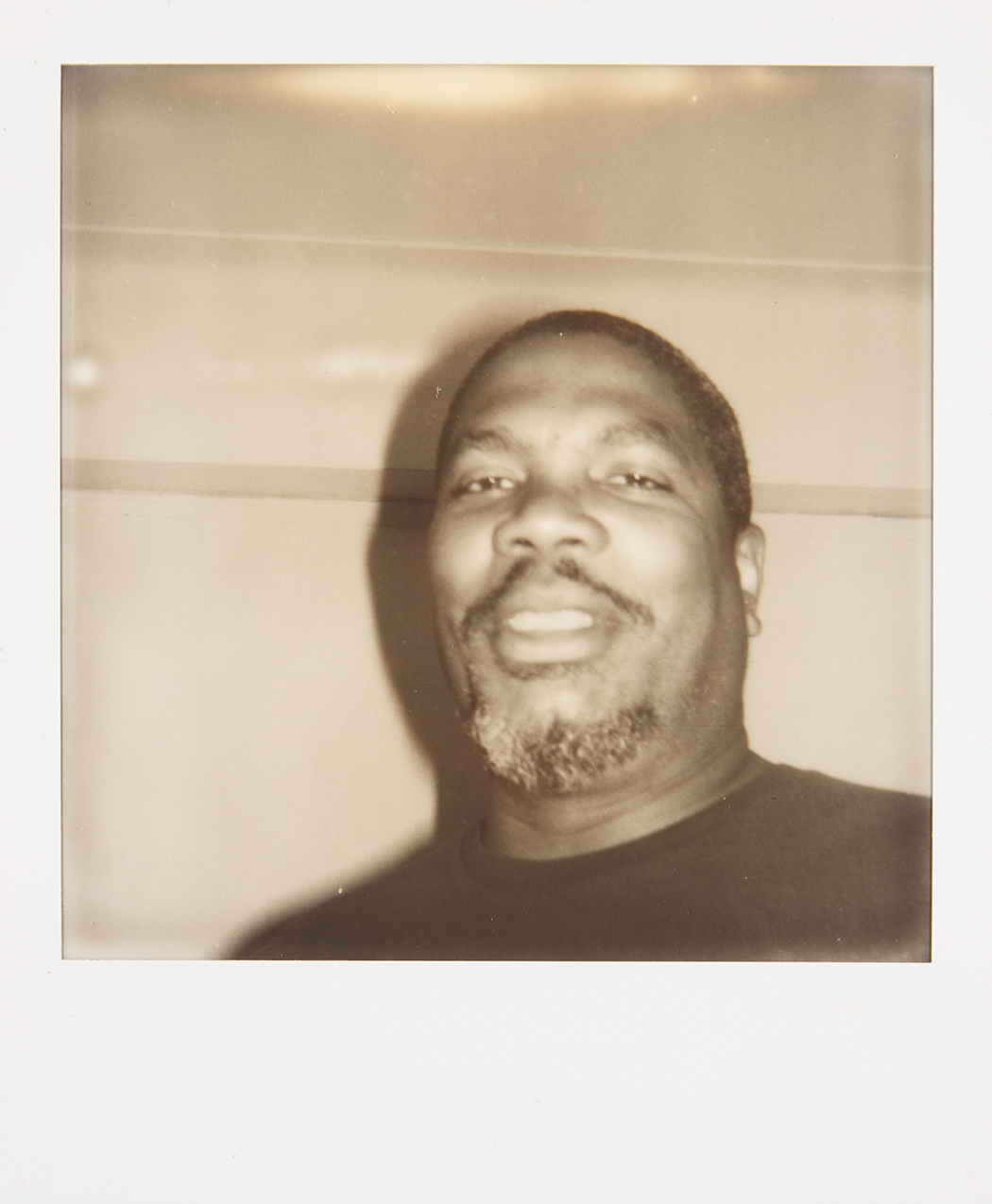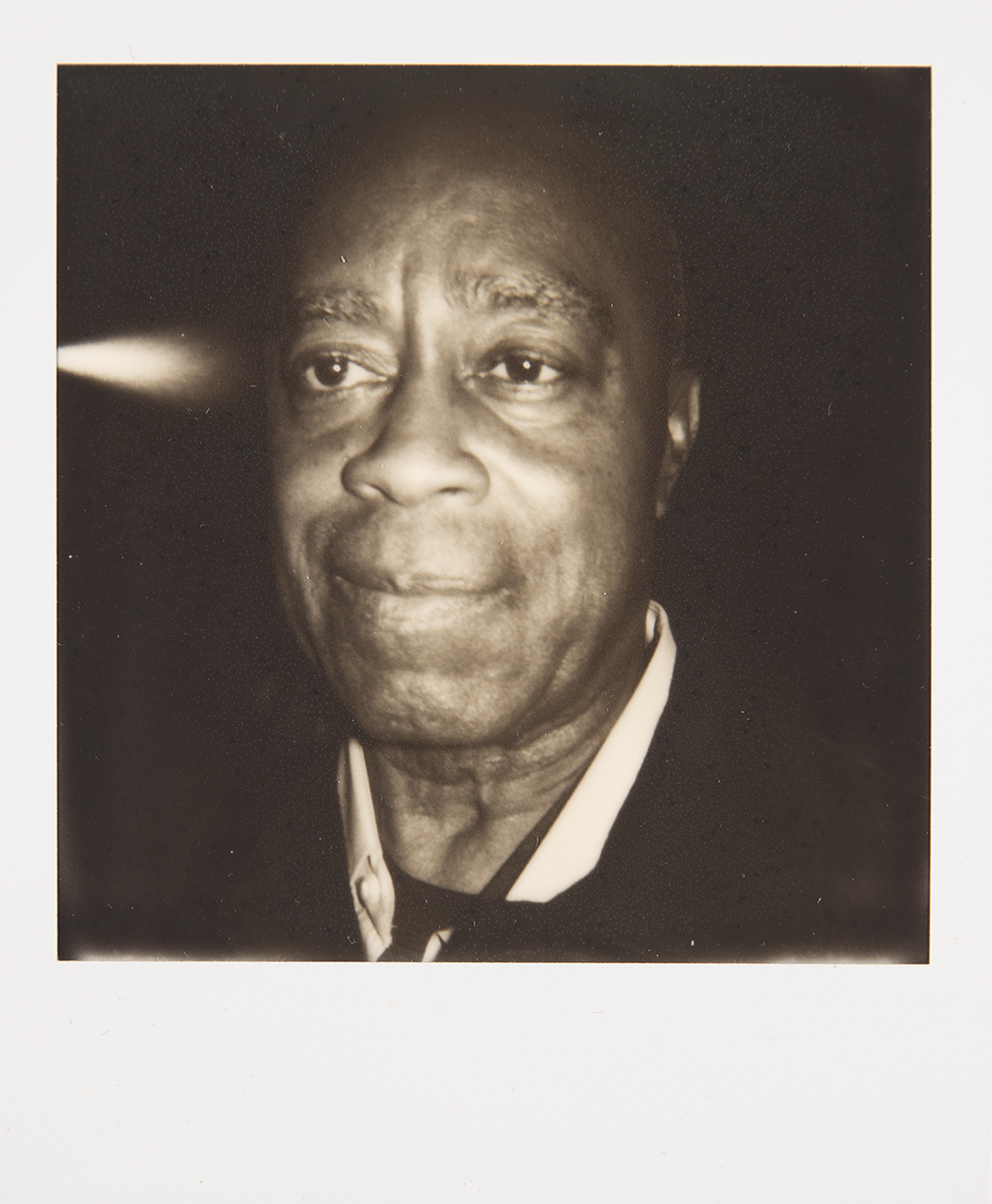Measuring Time
VSW PressRochester, New York
Forthcoming Spring 2021
By Greg de Cuir Jr
How do you measure time? This partial quote appears in the early pages of a new artist book by Ephraim Asili scheduled for release by Visual Studies Workshop in spring 2021. It also provides the publication’s title: Measuring Time. Composed of more than 80 Polaroid photographs depicting independent and avant-garde film luminaries, taken at significant meetings points in North America, such as Media City Film Festival in Windsor-Detroit, Blackstar Film Festival in Philadelphia, and the Flaherty Film Seminar in Upstate New York, Measuring Time is Asili’s first book, and an important introduction of the artist’s photographic work to the world.
The book’s title is an homage to celebrated multidisciplinary artist Carrie Mae Weems, with the full quote originating in a commencement address she delivered at the School of Visual Arts in New York in 2016. Channeling Weems as a spiritual influence, Asili’s book is primarily a showcase of his still photography, though other significant creative interventions are at play, tracing the freeform way he documents the people and places that have marked the recent years of his life. Measuring time might be an apt metaphor for the camera arts, which some have said are arts dealing primarily with death. But, as Weems has asked, and as Asili implicitly explores with this new book, a more profound query might be: how do you measure a life?
Asili utilizes the Carrie Mae Weems’ quote as a structuring motif for the book; it appears intermittently and in varying lengths throughout the pages. Its visual representation becomes a collage of typewritten letters and words with unstable pressings and faint echoes, positioned at random angles almost as if the words are struggling to manifest themselves in totality, similar to developing pictures in a darkroom. Collage is another key structure of Measuring Time. Asili intervenes on some pages with a selection of archival images, everything from newspaper clippings to comic book panels to images of such Black icons as Angela Davis and Patrice Lumumba. Those pages expand, folding out into panels, challenging the dimensions of the book format. This also lends an element of time interacting with space. The book is an object existing in multiple planes and dimensions.
Asili, who is well regarded for his dedicated 16mm film practice, also shoots in Polaroid, a format that had once been considered dead. But like many analogue technologies, the Polaroid has been resurrected by aficionados in their quest to avoid the the homogenizing force of digital culture. The photographic subjects in the book include many living legends from the international film and video art community, including older generations like Charles Burnett, Julie Dash and Rose Lowder to younger generations like Sky Hopinka, Christopher Harris, Kevin Jerome Everson, and Ja’Tovia Gary. Asili also shoots locales; for example, restaurants and seaside landscapes, and the prized objects he is so passionate about, records and books, particularly those reflecting important but marginalized artistic histories.
True to his undying enthusiasm for music, Asili includes an album called The Addendum with the book, featuring seven tracks he wrote and produced. Each track is an audio collage and a singular work of art, melding musical samples, passages of speeches, and various sonic effects. It’s worth mentioning that Asili is a practicing DJ, an immaculate live selector, performing and remixing his own film scores on occasion. The Addendum was created with a Boss SP 404 sampler and a Tascam four-track recorder—the same machines he employed for the evocative soundtrack of his celebrated Windsor-Detroit film Fluid Frontiers. The vinyl record represents yet another key constituent of Asili’s creative output, from cinema to photography, from music to assemblage.
Measuring Time reaffirms Asili as a fascinating and exciting talent. As a young artist, we can expect many great things from him in the years to come. But it is never too early to begin measuring one’s time, measuring one’s life. As Weems states: “When you think about the vastness of the universe in which we dwell, we are dust in the wind, and yet we are here.” Photography might also be considered the art of bearing testament to such a presence, in all of its cosmic implications. And so it was written, with light.






Greg de Cuir Jr is an independent curator, writer and translator who lives and works in Belgrade, Serbia.
Read next: Excerpts of Speeches from Jean-Luc Godard’s La Chinoise & Ephraim Asili’s The Inheritance from Integral Whirls: A Dossier on Ephraim Asili